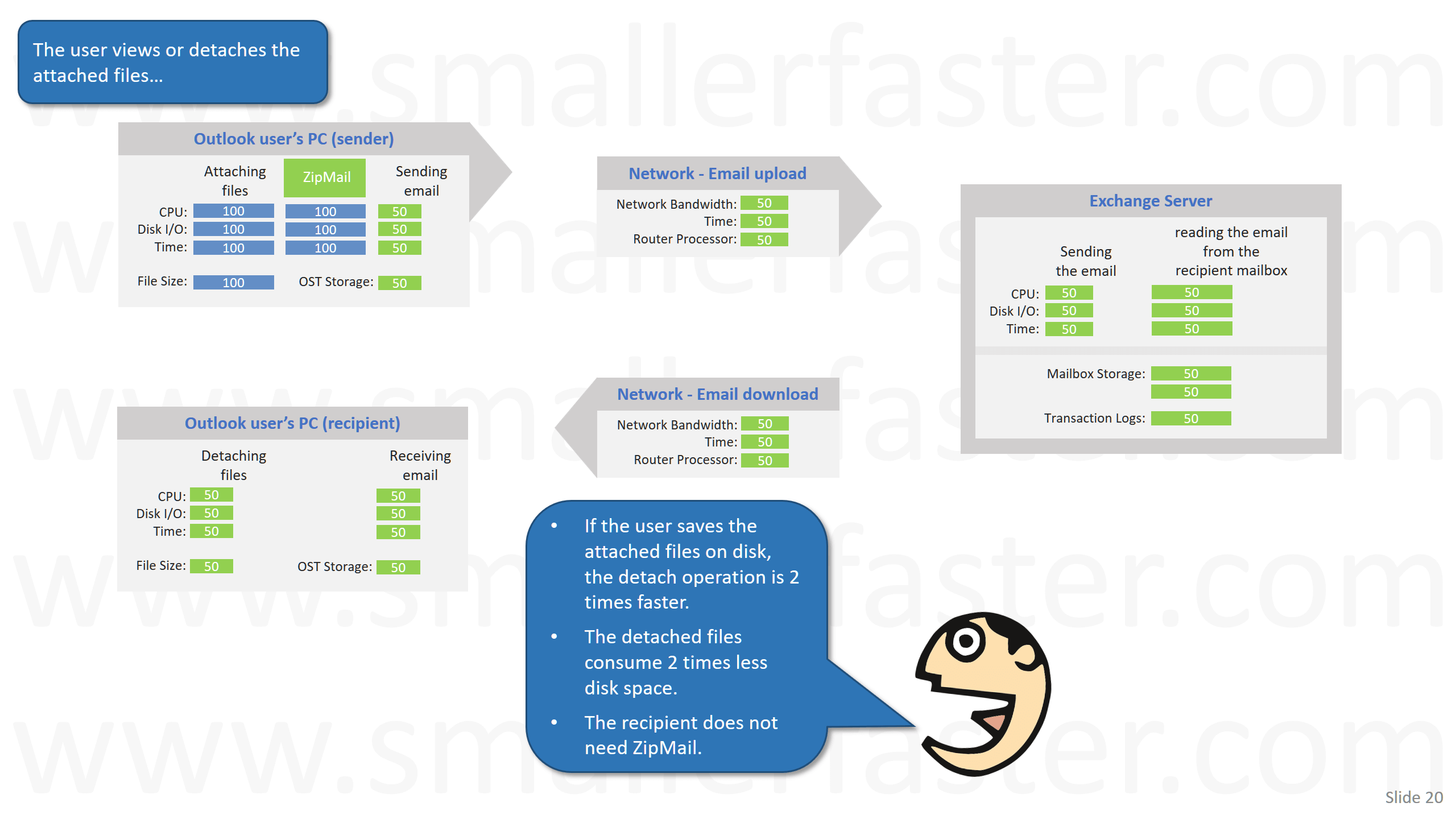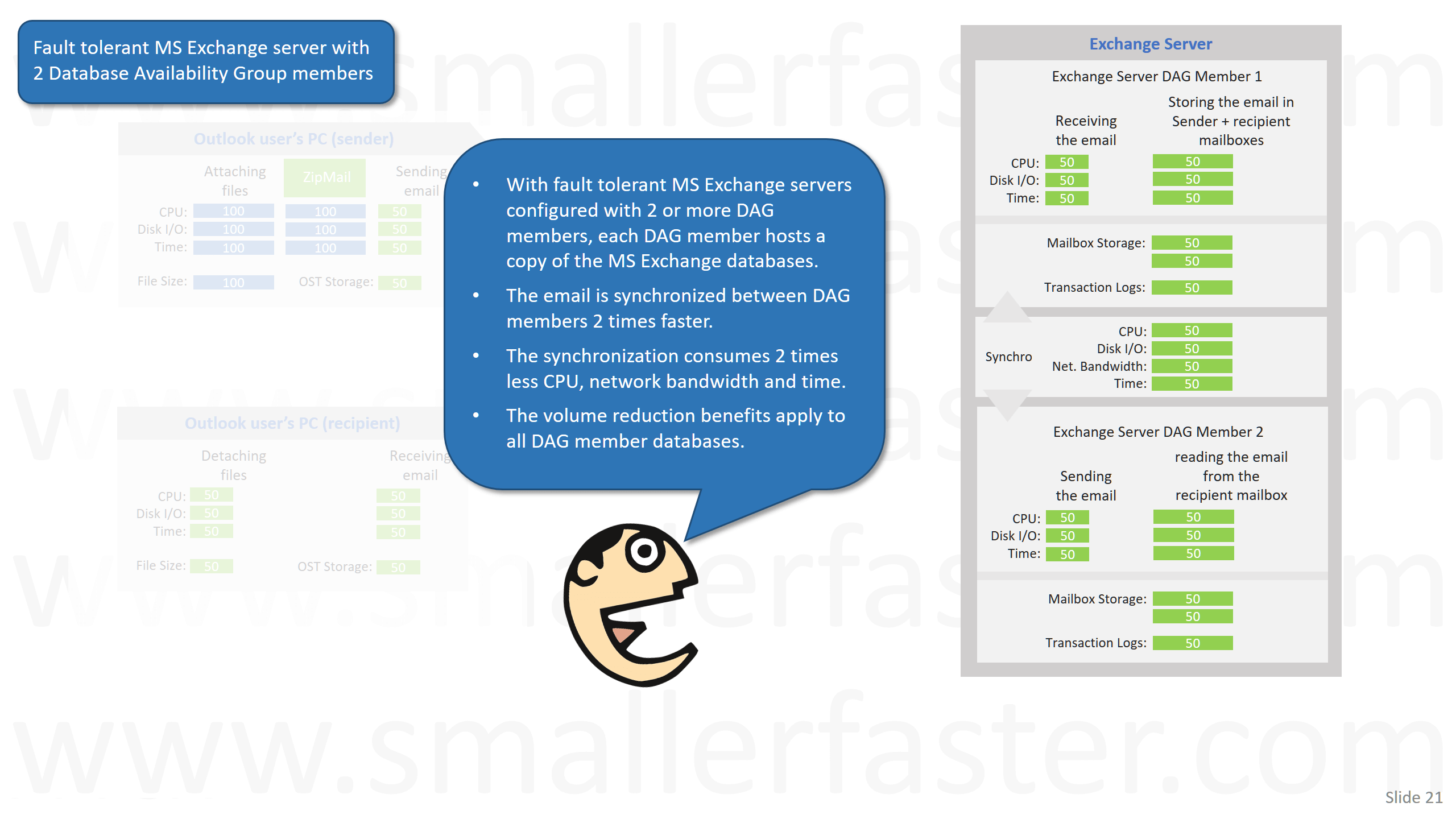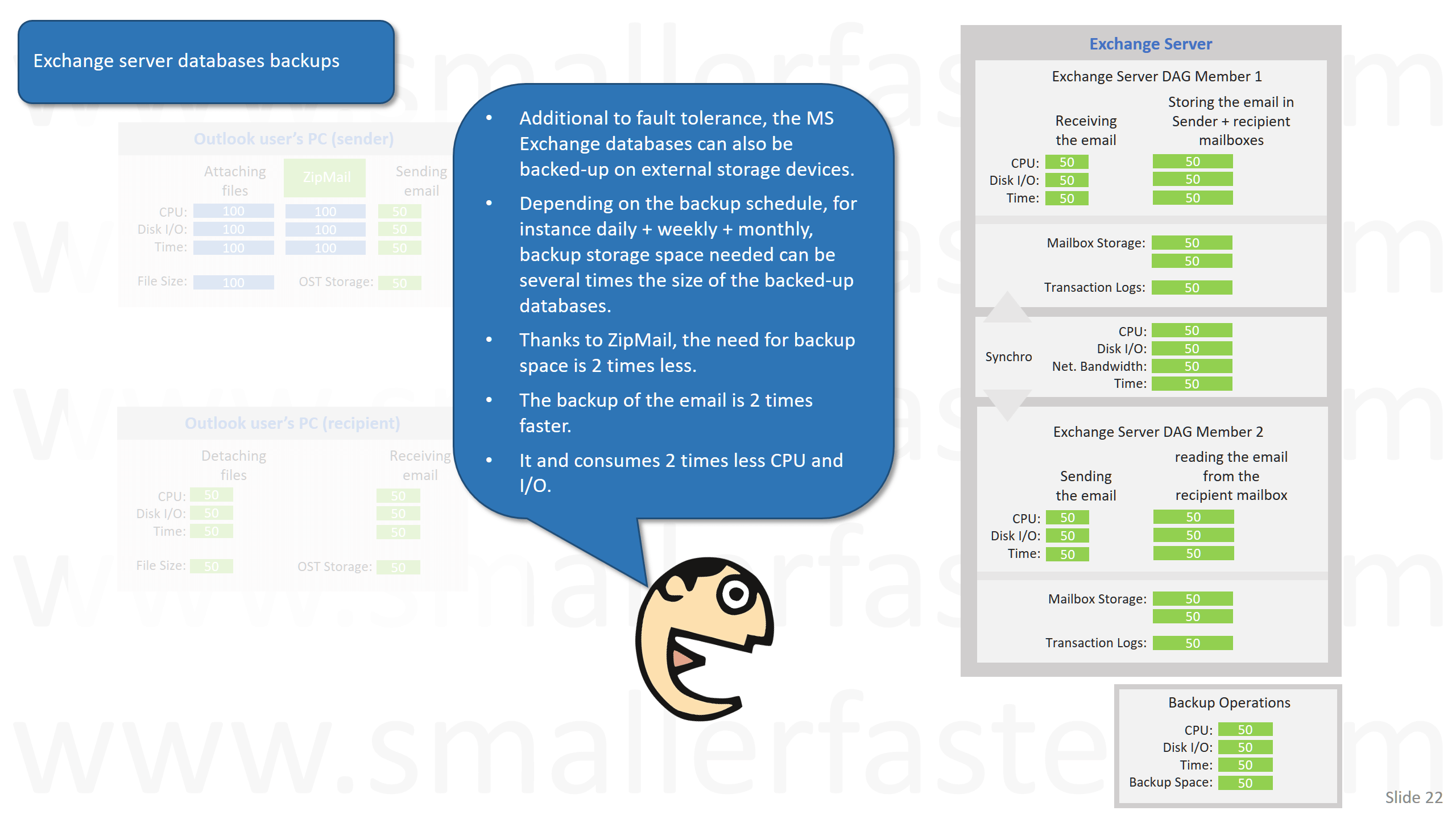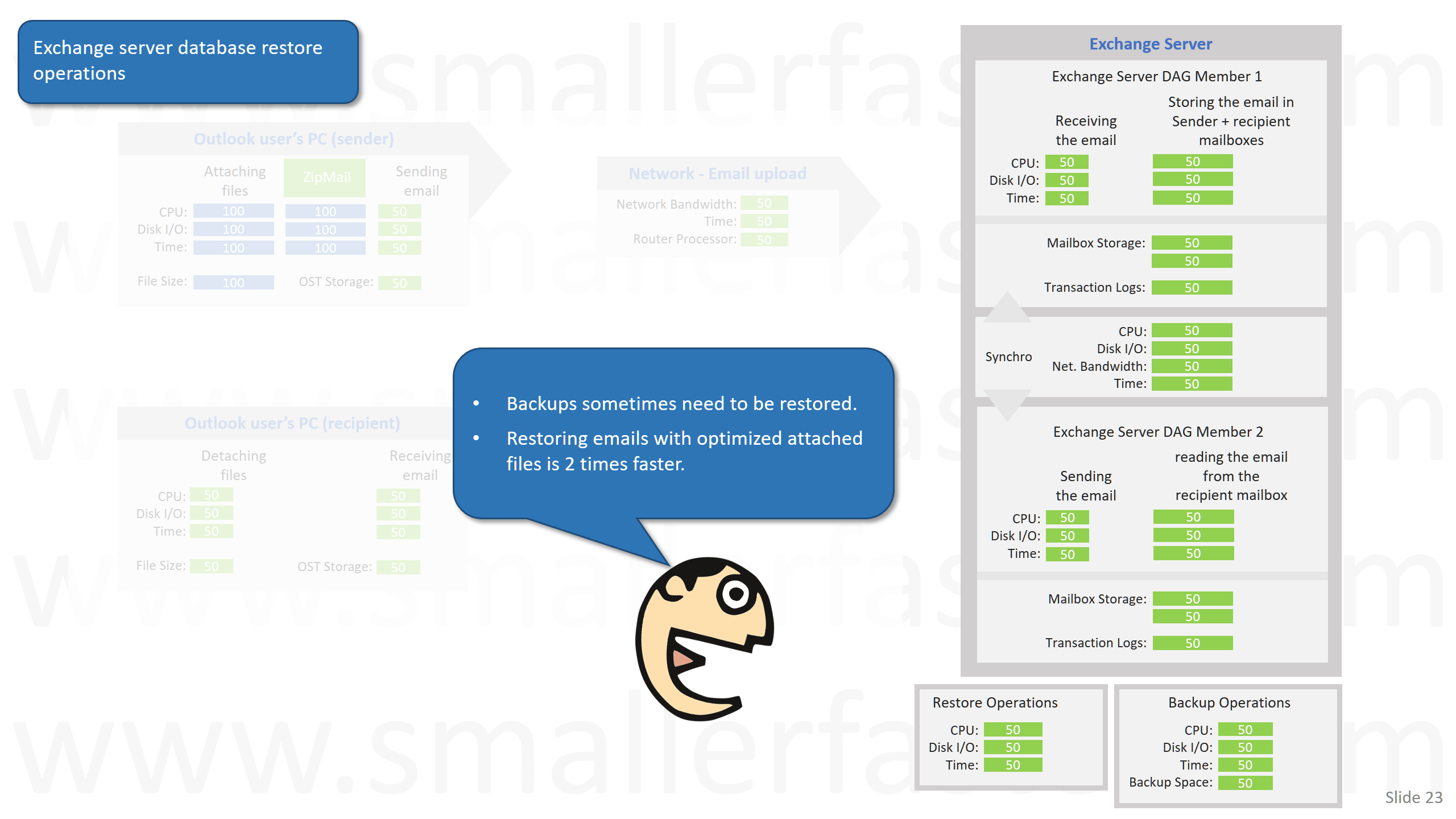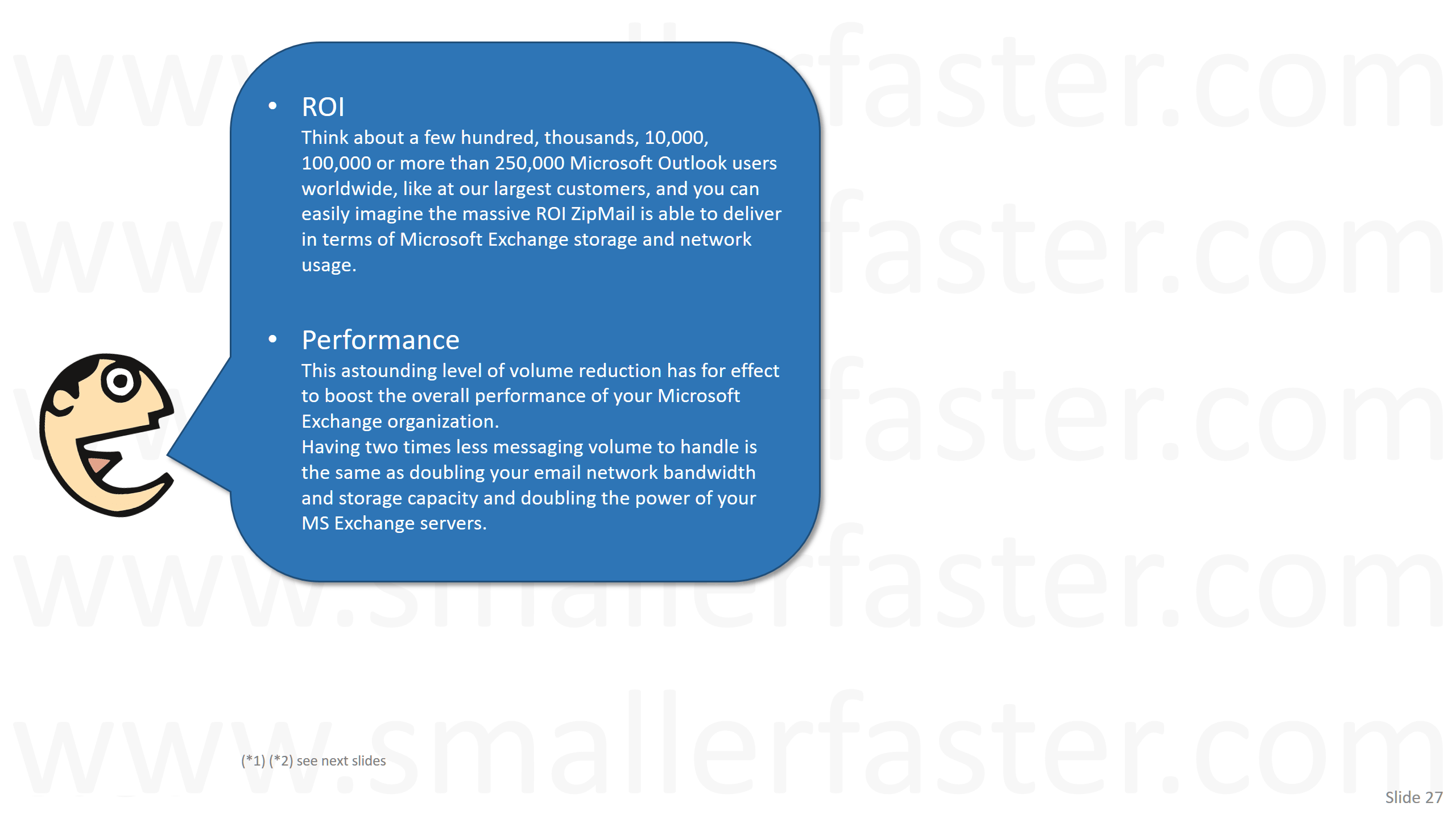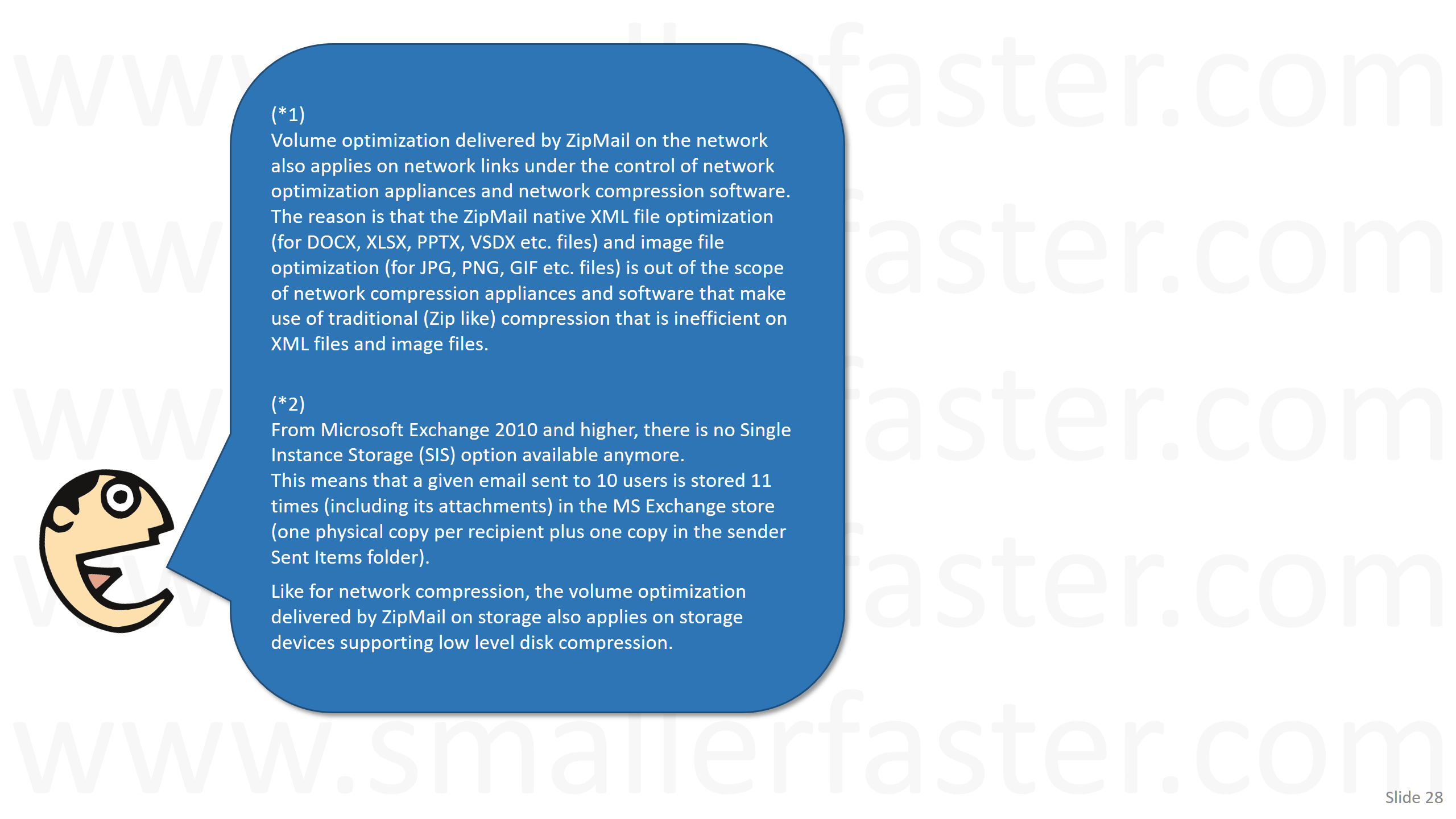Microsoft Exchange Outlook Attached Files, How to Do Better.
Microsoft Exchange Outlook Attached Files, Impact on Storage, Network and Performance.
How emails with attached files consume your MS Exchange storage, network bandwidth and impact performances:
Detailed analysis and proposed solution.


Microsoft Exchange Administrators,
All you ever wanted to know about disk space, network bandwidth, CPU and IOs consumed when sending and receiving emails with attached files.
Surprised about how fast your MS Exchange needs for disk space grows in time?
Would like to understand why all is so slow since you migrated your Exchange servers to the Cloud?
Looking for a simple solution to solve MS Exchange volume and performance issues?
This presentation and the next steps suggested at the end can help!
Now, let’s install ZipMail for Microsoft Outlook on the sender’s PC and look at the benefits it delivers.

The email transits on the network up to the MS Exchange server. Its attached files have been optimized by ZipMail on the sender side.

The email (its attached files have been optimized by ZipMail on the sender side) arrives and is processed on the MS Exchange server.
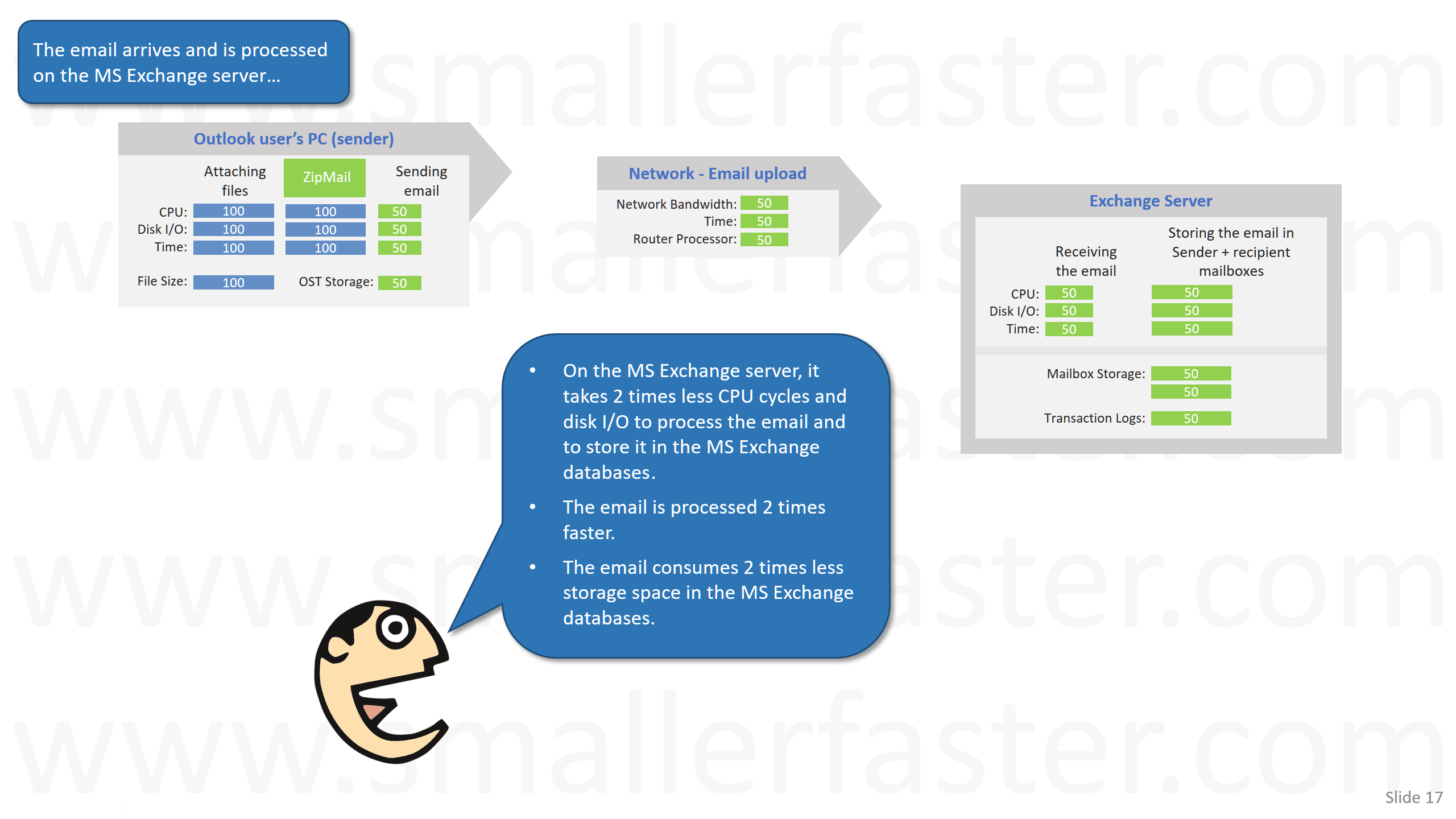
The email (and its attached files optimized by ZipMail on the sender side) transits on the network to the recipient’s PC.
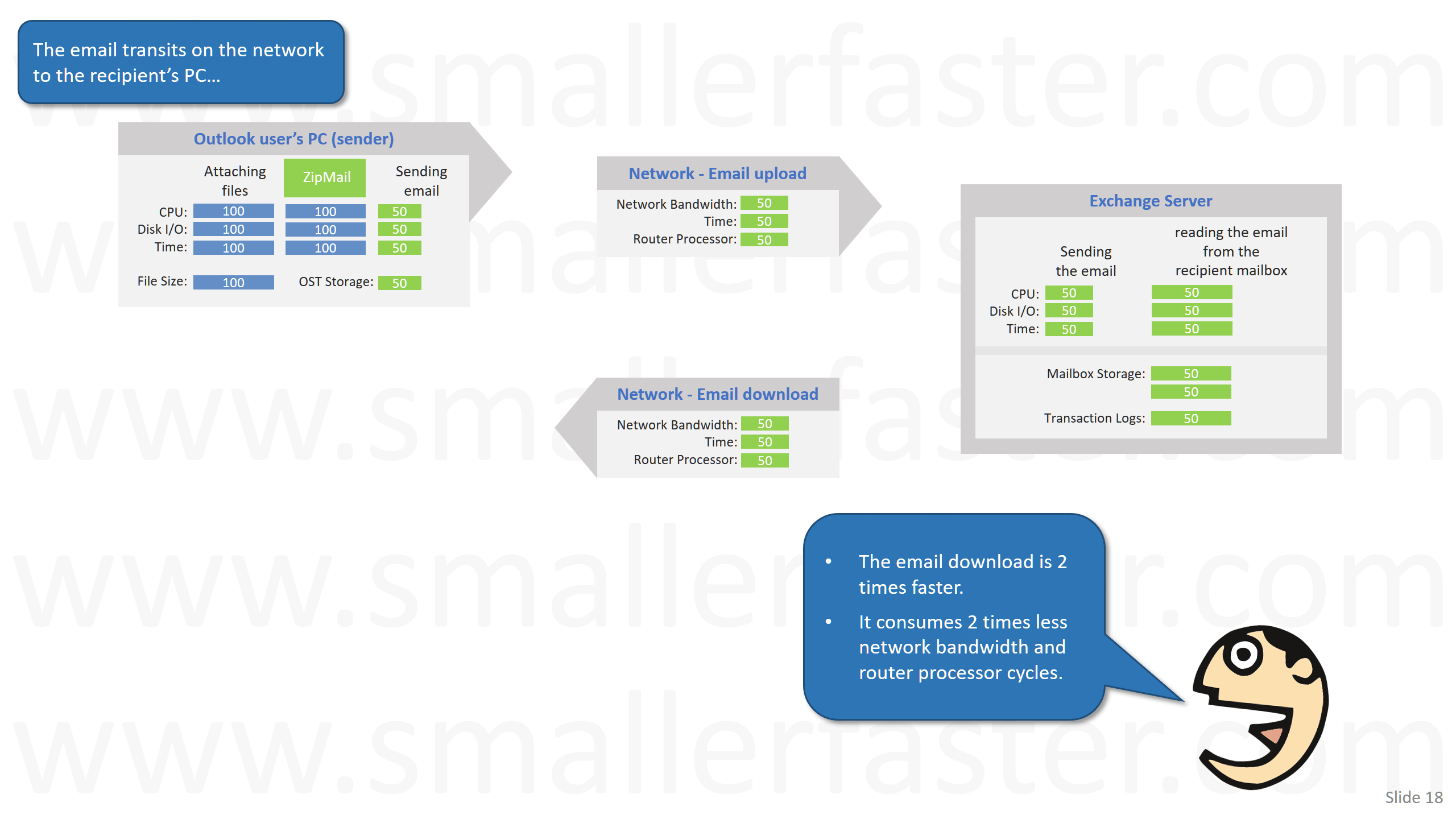
The email arrives on the recipient’s PC (its attached files have been optimized by ZipMail on the sender side). It is stored into the user’s OST file.
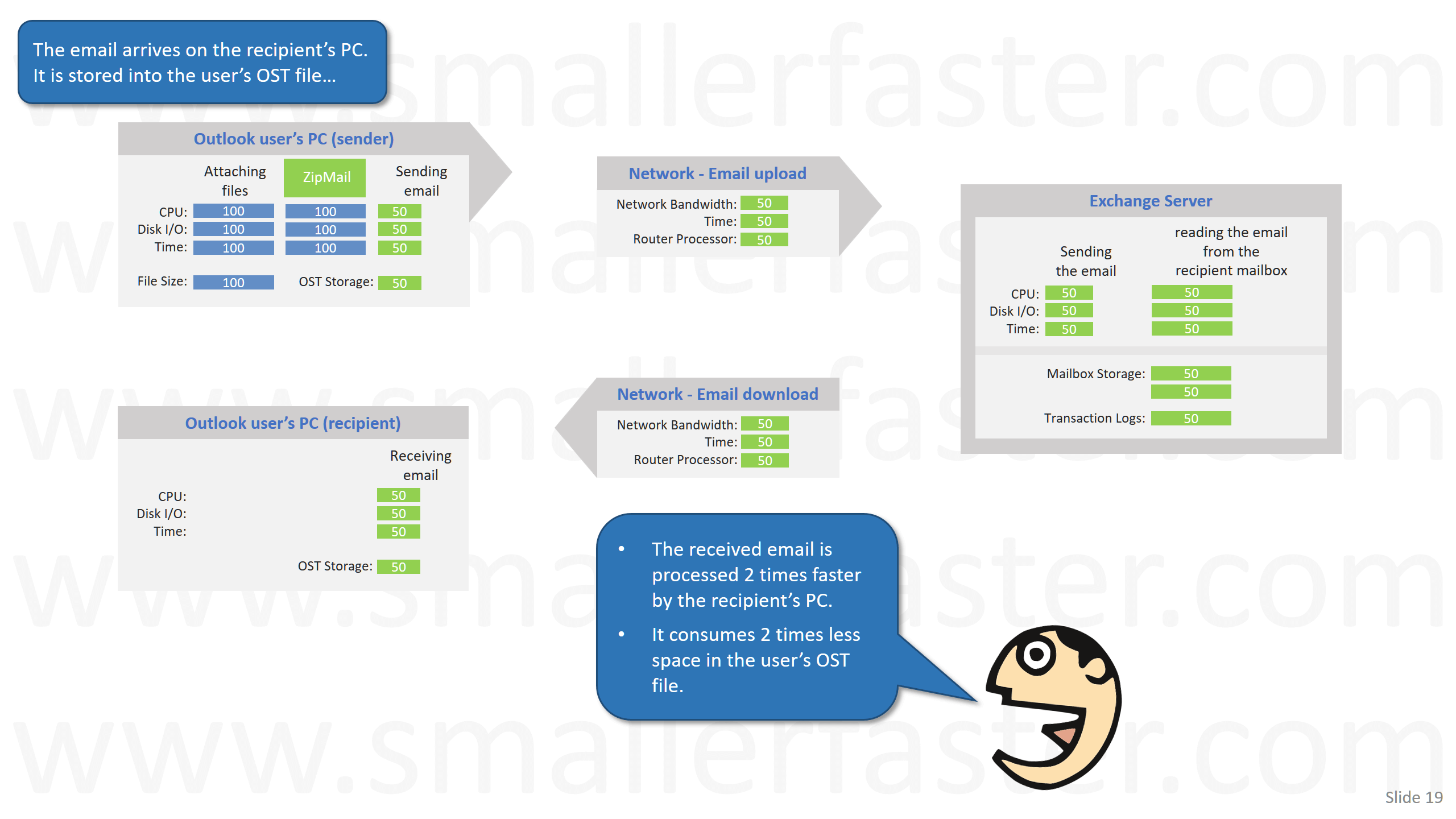
Email with attached file sent to one recipient (with ZipMail for Microsoft Outlook installed on the sender’s PC) - The complete picture
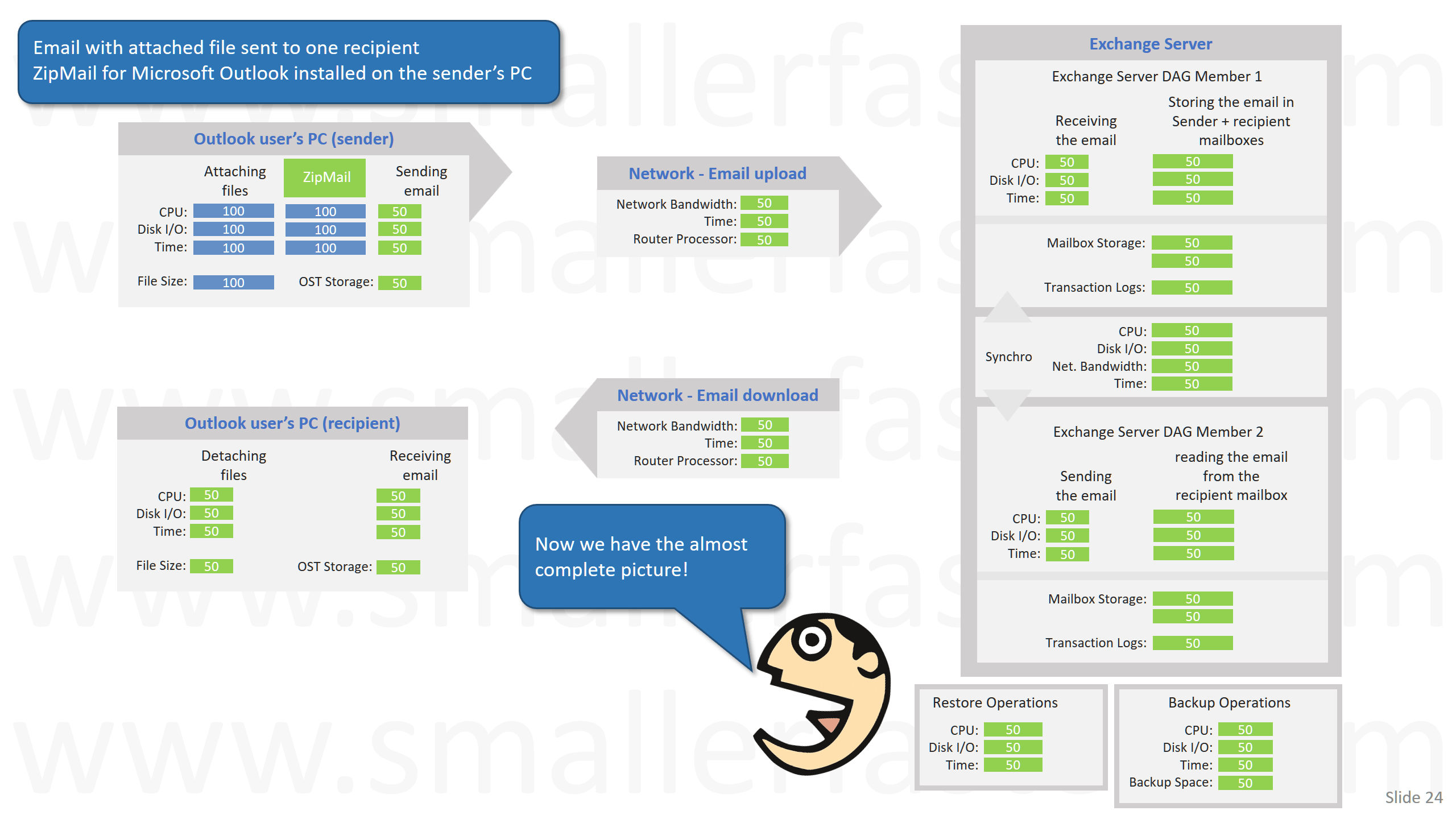
The previous slides were about an email sent to one single recipient. What about an email sent to 10 recipients?

Between 110 MB to 220 MB of MS Exchange storage and network bandwidth saved by ZipMail on this single email!
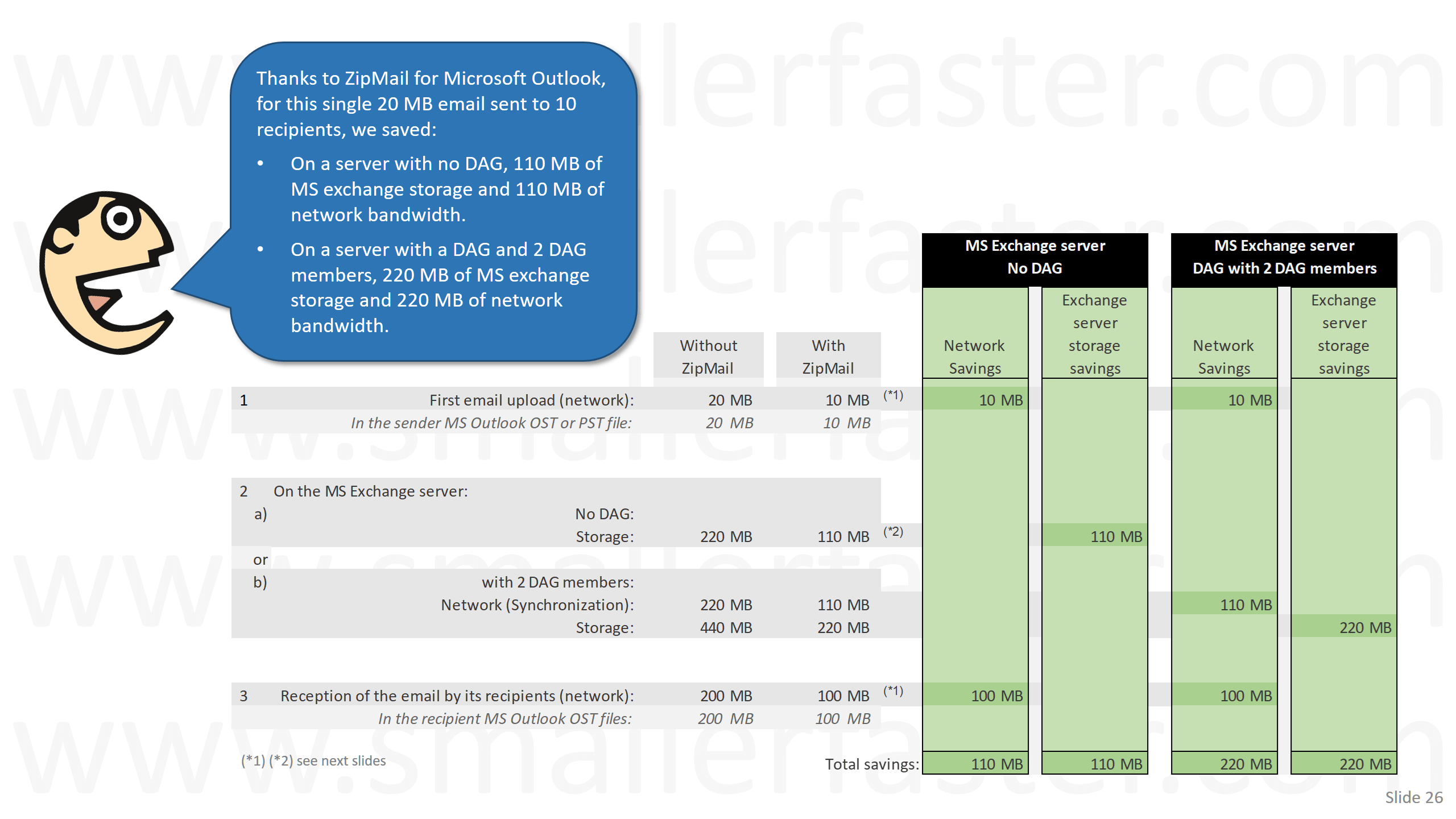
Thanks very much for your attention. We hope you enjoyed this presentation.
Would you like to go further, please see below for next steps:
To know more about ZipMail for Microsoft Outlook please see the home page of ZipMail for Microsoft Outlook including videos of the ZipMail optimization features, samples of MS Office and Picture files (before and after ZipMail optimization), download of a ZipMail for MS Outlook fully functional evaluation version, a detailed list of ZipMail for Microsoft Outlook features and more interesting items.
We also have a server version of ZipMail for Microsoft Exchange named ZipMail Real-Time.
In case you use Microsoft OWA, the above presentation applies as well for OWA. And we have an optimization solution for OWA attached files named Z-OptimiZr for Web Browsers (formerly ZipMail for OWA).
Make sure to contact us at any time, we'll be most pleased to answer any questions you may have about ZipMail for Microsoft Outlook.














